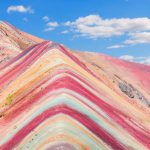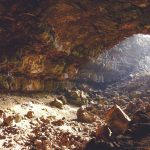Table of Contents
Forget what you think you know about deserts. These aren’t just barren landscapes of sand and sun – they’re some of Earth’s most dramatic environments, offering adventures that redefine what’s possible in extreme terrain. Here are five desert destinations that serious adventure seekers shouldn’t miss.
The Atacama’s Alien Landscapes: Northern Chile’s Otherworldly Playground
The Atacama isn’t just the world’s driest desert – it’s the closest you’ll get to Mars without leaving Earth. While tourists crowd Valle de la Luna, true adventurers head to the remote salt flats of Salar de Tara, where bizarre rock formations rise from crystalline lagoons frequented by wild flamingos.
The adventure potential here goes beyond standard tours. Mountain bikers tackle the descent from the 5,000-meter Lascar Volcano, dropping nearly two vertical miles through multiple climate zones in a single day. Experienced climbers attempt active volcanoes like Licancabur, standing sentinel over the Bolivia-Chile border. Nights here offer some of the world’s most pristine stargazing, with astronomy tours providing access to professional-grade telescopes.
The secret season runs from July to September, when nights drop below freezing but days remain clear and mild. Local outfitters in San Pedro de Atacama can arrange specialized expeditions, but come prepared – cell coverage is non-existent, and altitude sickness is a genuine concern.
Oman’s Wahiba Sands: The Middle East’s Undiscovered Dune Sea
While tourists flock to Morocco and Dubai for desert experiences, Oman’s Wahiba Sands remain refreshingly authentic. These dunes stretch over 180 kilometers, transitioning from towering golden sand mountains to flat gravel plains where Bedouin families still herd camels and goats.
True adventure here means joining local guides for multi-day dune traverses and sleeping at Bedouin camps where age-old traditions persist. The techniques for driving in deep sand are taught by masters who’ve navigated these landscapes for decades. Nights bring traditional music around fires, with stories passed down through generations.
The nearby Hajar Mountains offer a surprising counterpoint – deep wadis (canyons) cut through the rock, creating oasis pools for swimming after desert explorations. For the ultimate Omani desert adventure, experienced trekkers can attempt crossing from the Wahiba Sands to the Arabian Sea coast – a journey that passes through multiple desert ecosystems and requires expert navigation.
The ideal time falls between October and April when temperatures moderate. Muscat-based outfitters can arrange everything from basic 4WD rentals to comprehensive guided expeditions.
The Namib’s Ancient Dunes: Where Desert Meets Ocean
Namibia’s Namib Desert holds the title of the world’s oldest, with dunes that have evolved over millions of years. Beyond the famous dunes of Sossusvlei lies the Skeleton Coast, where the desert meets the violent Atlantic in a clash of environments like nowhere else on Earth.
The ultimate Namib adventure combines elements impossible elsewhere – sandboarding down 300-meter dunes in the morning, then tracking desert-adapted elephants or rhinos in dry riverbeds by afternoon. Multi-day 4WD expeditions along the Skeleton Coast reveal shipwrecks being consumed by the desert and seal colonies thriving in the harsh convergence of hot desert and cold ocean.
For those seeking true remoteness, “fly camping” expeditions into the NamibRand Nature Reserve offer nights under skies certified as one of Earth’s darkest. Track the desert’s surprisingly abundant wildlife with San Bushmen guides who read the sand like an open book, revealing the complex ecosystem hidden in seemingly lifeless terrain.
May through September offers ideal temperatures and clearest skies, with September bringing the desert’s brief floral bloom. Specialized operators based in Windhoek provide expedition planning, but be prepared for self-sufficiency – this is an environment that demands respect.
Australia’s Simpson Desert: The Red Heart of the Outback
The Simpson Desert represents Australia at its most challenging and rewarding. This massive dune system covers 176,000 square kilometers of the continent’s interior, featuring the world’s longest parallel dunes stretching unbroken for hundreds of kilometers.
The ultimate Simpson crossing requires serious 4WD skills and extensive preparation. The French Line track crosses more than 1,100 dunes running east-west, each presenting a unique driving challenge. Wildlife appears surprisingly abundant around clay pans and ephemeral water sources – from thorny devils and perenties to wild camels and dingoes.
What makes the Simpson special is its isolation. Communication requires satellite phones, and backup vehicles are mandatory. Yet for those properly prepared, there’s nothing like climbing a towering red dune at sunset to survey an untouched landscape extending to the horizon in all directions.
The window for exploration runs brief – May to August offers survivable temperatures. Extreme preparation is mandatory, including permits, multiple spare tires, extra fuel, and water supplies calculated at 10 liters per person per day minimum. Adelaide and Alice Springs outfitters offer guided expeditions for those without extensive desert driving experience.
The Sahara’s Forgotten Corner: Algeria’s Tassili N’Ajjer
While Morocco’s Sahara draws crowds, Algeria’s Tassili N’Ajjer National Park offers something extraordinary – a desert plateau housing one of the world’s most important prehistoric rock art collections. This UNESCO site combines cultural richness with otherworldly landscapes of eroded sandstone formations called “stone forests.”
The adventure here transcends the typical desert experience. Multi-day treks with Tuareg guides follow ancient caravan routes between water sources, sleeping in natural rock shelters adorned with 9,000-year-old paintings depicting a green Sahara teeming with wildlife. The “Crying Cow” painting alone, showing a bovine figure dating to 5000 BCE, justifies the journey.
The landscape shifts between massive dunes, stone arches that rival Utah’s, and surreal rock formations sculpted by wind over millennia. Water appears in unexpected places – hidden guelta pools tucked into canyons support relict populations of desert crocodiles, living fossils from when the Sahara was savanna.
Travel requires patience with permits and the services of specialized Algerian tour operators. The optimal window spans October to March. Security considerations necessitate guided travel, but the reward is experiencing a corner of the Sahara that few outsiders ever see.
Desert Adventure Essentials
Desert adventures demand specialized knowledge and equipment. Water calculations must include cooking and minimal hygiene. Navigation requires redundant systems – GPS devices, physical maps, and the ability to read natural features. Temperature management means understanding both extreme heat and, surprisingly, desert cold – nighttime temperatures can drop below freezing even in hot deserts.
The most important equipment isn’t technical but mental – deserts reward patience, careful observation, and respect. Those who bring these qualities discover that these seemingly empty landscapes teem with life and stories, revealing themselves to travelers willing to move at the desert’s own pace.

I’m Garrett, a seasoned photojournalist with a passion for uncovering the world’s hidden treasures. My journey is fueled by a deep curiosity for diverse cultures and breathtaking landscapes. When I’m not behind the lens capturing the world’s wonders, you can find me exploring underwater realms or sharing my passion for discovery with my two adventurous children.




